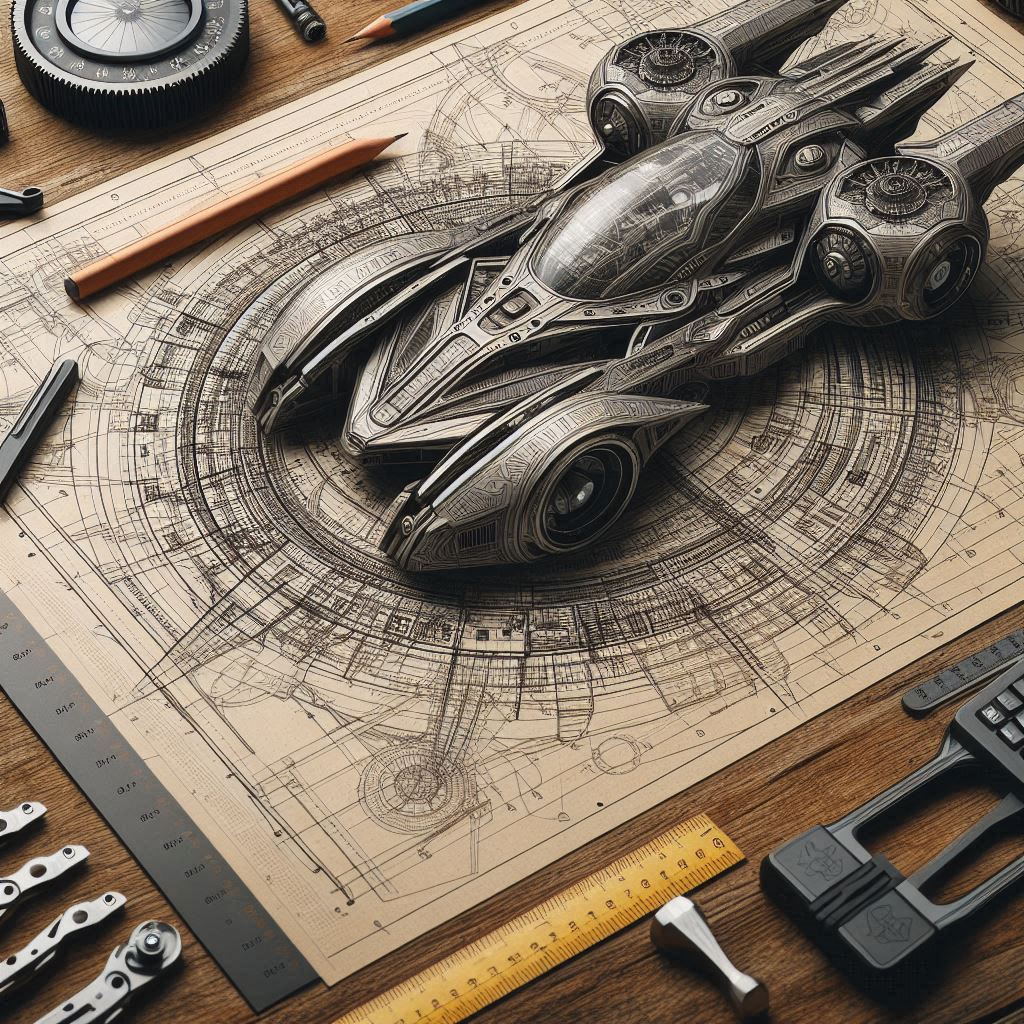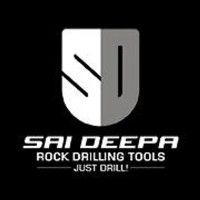
Complete Course on 2D Drafting, Solidworks And GD&T

HEXSPUR FOUNDATION
Mechanical Design Engineer & Trainer
$ 200
2 already enrolled!
Advanced course for professionals

Complete Course on 2D Drafting, Solidworks And GD&T
Trainers feedback
0
(0 reviews)
HEXSPUR FOUNDATION
Mechanical Design Engineer & Trainer
Course type
Watch to learn anytime
Course duration
1183 Min
Course start date & time
Access anytime
Language
English
This course format through pre-recorded video. You can buy and watch it to learn at any time.
Why enroll
Upon successful completion of this course, participants will receive a Certificate of Competency in Mechanical CAD and GD&T. This credential will certify the participant's ability to use CMS IntelliCAD and SolidWorks for creating detailed mechanical designs, as well as their proficiency in applying GD&T principles per ASME Y14.5 standards.
Credential Outcomes:
Proficiency in CMS IntelliCAD and SolidWorks: Demonstrated ability to create precise 2D and 3D models, assemblies, and detailed technical drawings.
GD&T Knowledge and Application: Verified understanding and practical skills in applying GD&T principles, including feature control frames, tolerance zones, and datum referencing as outlined by ASME Y14.5.
Industry-Relevant Skills: Recognized competency that meets industry standards for mechanical design engineering, supporting career advancement in fields such as manufacturing, automotive, aerospace, and product development.
Opportunities that awaits you!

Earn a course completion certificate
Add this credential to your LinkedIn profile, resume, or CV. Share it on social media and in your performance review
Course content
The course is readily available, allowing learners to start and complete it at their own pace.
Complete Course on 2D Drafting, Solidworks And GD&T
25 Lectures
1123 min
Introduction
5 min
What is Design & Drafting?
6 min
2D Interface of CAD Software - Basics
42 min
Zoom Command
26 min
Coordinate System
25 min
Coordinate and Polar System
30 min
Learn to draw commands
64 min
Draw Commands -- Ellipse
83 min
Rectangle Command
60 min
Polygon Commands
60 min
Working with snap
56 min
Modify Commands
42 min
Modify commands - 1
60 min
Modify command-2
60 min
Modify commands-3
60 min
Array Command
60 min
Path array and inspection Command
60 min
Work with entity properties
36 min
Layer Properties
37 min
Engineering Drawing
36 min
Annotation in drawing
42 min
Working with block
45 min
Lecture 22 - Working with block
45 min
lec- 23 Filling Boundary
50 min
Filling with boundary 23
33 min
Solidworks
1 Lectures
60 min
Solidworks - Interface
60 min
Course details
Course Overview:
This comprehensive course is designed to equip students with essential skills in Mechanical Design and industry practices. It covers the use of advanced mechanical design software like CMS IntelliCAD and SolidWorks, as in-depth understanding of GD&T (Geometrical Dimensioning and Tolerancing) in technical drawings, and proficiency in Microsoft Office tools such as Word, Excel and PowerPoint.
This course ensures that participants gain the technical knowledge and practical expertise needed to excel in the mechanical design field.
Benefits of the Course:
· Fluency on working with computer-based design tools (CMS IntelliCAD & SolidWorks).
· Develop a strong foundation in GD&T, enhancing precision in technical drawings.
· Acquire advanced skills in Microsoft Office tools to improve productivity and professional documentation.
· Gain hands-on experience with real-world design projects.
· Enhance employability with job placement assistance provided at the end of the course.
What You will Achieve:
· Become proficient user of 2D drafting computer-based CAD tool (CMS IntelliCAD).
· Become proficient user of 3D modeling computer-based CAD tool (SolidWorks).
· Understand and apply GD&T in technical drawings.
· Effectively use Microsoft Word, Excel and PowerPoint for professional tasks.
· Ready to work as a Mechanical Design Engineer in industry confidently.
Course suitable for
Aerospace Automotive Mechanics & Turbomachinery Mechanical
Key topics covered
Introduction to CMS IntelliCAD and SolidWorks
Overview of software interfaces and essential tools
Setting up projects and organizing design workflows
2D Drafting and Annotation
Creating and editing 2D sketches
Applying annotations and dimensioning
Generating accurate technical drawings
3D Modeling Techniques
Solid and surface modeling
Creating complex geometries and assemblies
Managing part relationships and constraints in assemblies
Geometric Dimensioning and Tolerancing (GD&T) Basics
Introduction to ASME Y14.5 standard
Understanding fundamental GD&T concepts: symbols, rules, and tolerance zones
Applying datums and basic controls
Advanced GD&T Applications
Feature control frames and composite tolerancing
Form, profile, orientation, location, and runout tolerances
Analyzing and interpreting GD&T on real-world engineering drawings
Tolerance Stack-Up Analysis
Methods for calculating and optimizing tolerances
Case studies for analyzing assemblies with multiple tolerance zones
Practical Applications and Project-Based Learning
Design projects using CMS IntelliCAD and SolidWorks
Applying GD&T in project settings
Conducting design reviews and applying industry best practices
Final Project and Assessment
Capstone project combining CAD modeling and GD&T
Evaluation of design accuracy, compliance with ASME Y14.5, and overall functionality.
Why people choose EveryEng
Industry-aligned courses, expert training, hands-on learning, recognized certifications, and job opportunities—all in a flexible and supportive environment.
- Industry Veteran
- Trainer Review

HEXSPUR FOUNDATION
Mechanical Design Engineer & Trainer
Questions and Answers
A: Certainly! 2D drafting involves creating flat, two-dimensional drawings that represent the geometry and dimensions of parts or assemblies. It is typically done using software like AutoCAD. 3D modeling, on the other hand, involves creating three-dimensional representations of objects using CAD software such as SolidWorks. While 2D drawings are essential for manufacturing and documentation, 3D models allow more detailed visualization, simulations, and design validations. For more details, you can refer to the SolidWorks official tutorials here: https://www.solidworks.com/sw/resources/tutorials.htm.
A: SolidWorks provides an intuitive 3D parametric modeling environment that helps designers create accurate and complex models efficiently. Key benefits include parametric design, which allows easy modifications; assembly modeling to test how parts fit and function together; simulation tools to analyze stresses, flows, and motion; and integrated drawing generation for manufacturing documentation. Additionally, SolidWorks supports collaboration and data management features, improving productivity. More information is available on the SolidWorks official site: https://www.solidworks.com/product/3d-cad-design.
A: GD&T, or Geometric Dimensioning and Tolerancing, is a system that defines and communicates engineering tolerances through symbolic language on technical drawings. It specifies the allowable variation in form, orientation, location, and profile of features on a part, beyond just linear dimensions. GD&T is important because it provides precise definitions that are unambiguous, improves manufacturing quality control, ensures functional interchangeability of parts, and helps in reducing costs by allowing controlled variation. A comprehensive resource is the ASME Y14.5 standard which can be explored here: https://www.asme.org/codes-standards/find-codes-standards/y14-5-geometric-dimensioning-tolerancing.
A: Parametric modeling allows defining dimensions, constraints, and relationships that control the geometry of a model. When a parameter is changed, the model automatically updates to reflect the change without needing to be redrawn from scratch. This drastically speeds up design iterations and helps maintain design intent. For example, if a hole diameter is increased, all related features will adapt accordingly. SolidWorks is a popular parametric CAD software that exemplifies this capability. You can learn more about parametric design in SolidWorks here: https://help.solidworks.com/.
A: Common 2D views in mechanical drawings include Front View, Top View, Side View (Right or Left), Section View, Detail View, and Auxiliary View. The Front, Top, and Side views are principal orthographic projections used to represent different faces of the part. Section views reveal internal features by cutting through the part, detail views zoom into small features, and auxiliary views show inclined surfaces true to scale. These views help in providing complete understanding for manufacturing. Standards like ISO and ASME Y14.3 define conventions for these views.
A: Assembly modeling in SolidWorks involves bringing together multiple part models into a single file to check the fit, function, and interaction of components. Constraints known as mates are used to define the positional relationships between parts, such as coincident, concentric, or distance mates. This allows designers to simulate real-world movement, interference detection, and overall assembly behavior. It is crucial for ensuring that the assembled product functions correctly before production. More details on assembly mates can be found here: https://help.solidworks.com/2023/English/solidworks/sldworks/c_assem_mates.htm.
A: In GD&T, tolerances are categorized to control specific aspects of a feature: Form tolerances control the shape of a feature without regard to its location or orientation (e.g., flatness, straightness). Orientation tolerances control the tilt or angle of a feature relative to a datum (e.g., perpendicularity, parallelism). Location tolerances control a feature's position relative to one or more datums (e.g., position, concentricity). Understanding these distinctions helps in specifying functional requirements precisely. The ASME Y14.5 standard provides comprehensive definitions.
A: To make 2D drafts manufacturing-ready, ensure clear, unambiguous dimensions and tolerances; use standard symbols and notation; include all necessary views and details; add material specifications and surface finish indications; and verify that the drawing adheres to relevant standards (like ISO or ASME). Additionally, review for clarity, proper scale, and consistent line types. Having a well-documented drawing reduces manufacturing errors and improves communication between engineering and production teams.
A: The Bill of Materials (BOM) in SolidWorks lists all the components, subassemblies, and materials used in an assembly along with their quantities and properties. The BOM helps in tracking parts for procurement, inventory, costing, and assembly instructions. SolidWorks can generate and customize BOM tables that automatically update when the assembly changes, ensuring accuracy. BOM management is crucial for efficient manufacturing and project management. For more details, see: https://help.solidworks.com/2023/English/solidworks/sldworks/c_bill_of_materials.htm.
A: Feature-based modeling involves constructing CAD models using predefined features like extrudes, cuts, fillets, and patterns that are parametric and history-driven. Changes to parameters reflect downstream in the model automatically. This approach is common in SolidWorks. Direct modeling allows editing geometry directly without concern for feature history, useful for quick edits or working with imported geometry. Each method has its advantages: feature-based is better for complex, controlled designs; direct modeling is flexible for conceptual or reverse engineering tasks.
More from Same Author
- Technical Courses
- Articles
4 (41)
Watch to learn anytime
266
1
E-Learning
Unlimited access
4 (41)
Watch to learn anytime
1340
8
E-Learning
Unlimited access
4 (41)
Watch to learn anytime
2721
21
E-Learning
Unlimited access
Earning and Growth option in same Industry Domain
- Pre-recorded
- Online live session
- Offline
- Articles
Watch to learn anytime
631
1
E-Learning
Unlimited access
Watch to learn anytime
2401
2
E-Learning
Unlimited access
4 (41)
Watch to learn anytime
1398
10
E-Learning
Unlimited access
More Training & Development option to expand your reach
- Technical courses
- Soft-skill courses
- Seminars & Conferences
- Articles & Blogs
4 (23)
Instructor led live training
741
1
Online
Live courses
October 11
14 Hrs
Advanced
Instructor led live training
352
Online
Live courses
October 13
15 Hrs
Advanced
Instructor led live training
205
Online
Live courses
October 13
15 Hrs
Advanced























